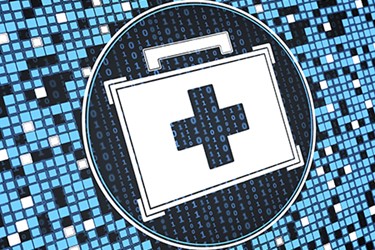Closing Gaps In Care With Digital Care Coordination
By Jason Kressel, MyHealthDirect

The rates for closing gaps in care are some of the most widely used, quantitative metrics to measure quality, allocate incentives, and control costs. Both health plans and providers are each financially incentivized to close gaps in care. For health plans, programs through Medicaid (HEDIS) and Medicare (STARS) have meaningful incentives and/or penalties tied to a members’ ability to receive certain healthcare services. Similarly, valued-based providers can control costs by providing certain recurring services to their patients. Fee for service providers also benefit from the additional volume generated by closing gaps in care. Gap closure uniquely aligns quality and financial incentives across health plans and providers.
There are many obstacles that health plans, providers, and patients face in closing gaps in care, from difficult socio-economic determinants to inconsistent (or sometimes non-existent) care coordination. To make things more difficult, as of this past summer, the National Committee for Quality Assurance (NCQA) expanded its list of HEDIS measures setting the gauntlet even higher for health plans to close gaps in care.
Innovation is required to enable health plans and providers to overcome the many obstacles on the path to closing gaps in care. Those that fail to adapt and strategically focus on the right innovations will not meet the quality thresholds, miss incentive dollars and will struggle to survive. Patients also lose out by not taking full advantage of their benefits and having a more proactive posture on managing their health.
There are solutions available, though, and technology is rising to meet the challenges. Specifically, digital care coordination solutions are enabling call center agents and referral coordinators to more quickly and easily close gaps in care. Health plans and providers are seeing real benefits from connecting with their preferred providers digitally and scheduling appointments directly into their calendars in real-time.
Below are a few ways that digital care coordination technology can help health plans and providers close gaps in care.
- Improved Call Center Efficiency
Digital care coordination mitigates the need for the dreaded three-way call between a patient, provider and health plan. With the elimination of three-way calls and the ability to perform guided search, health plan call centers operate far more efficiently. Without the time spent digging through binders of information and schedules, manually sifting through patient questions and concerns to determine the right fit, or the scheduling conversations with providers’ offices, call center agents are able to quickly direct patients to the best possible appointment with any provider or specialist. And when patients are directed to the optimal provider with their appointment day/time preference, they’re more likely to keep—and show up—for those appointments.
- Stronger Provider-Plan Relationships
Under a digital model, health plans require less time from busy providers for scheduling, coordination, and follow-up. This enhances the relationship between both parties through better and more seamless communication. An automated process for scheduling appointments also provides opportunities for gathering and assessing analytics (such as number of appointments completed) which can be helpful for optimizing performance over time. Using data, payors and providers can collaboratively address challenges and review results in real-time.
- Reduced Patient Wait Times
With more accurate real-time scheduling and fewer opportunities for miscommunication, health plans are more likely to connect patients with providers and specialists in a shorter time frame. Patients spend less time waiting for an appointment, making them more satisfied with their care choice and much more likely to return for follow-up care in the future. Shorter wait times also mean that vital health screenings and other care needs are addressed as quickly as possible.
- Automated Outreach & Self-Scheduling
Among the benefits of digital care coordination are the ability to automate outreach via myriad channels (such as text message), and then prompt patients to self-schedule their own appointments online. Another example is automated interactive voice response (IVR) phone calls that enable members to schedule appointments by selecting options during the scripted and automated IVR call. This automation enables health plans to close gaps in care without a single call center agent, improves the member experience by offering convenient access to needed care, and limits the possibility of human error by automating scheduling rules. Similarly, providers can automatically engage their patients to schedule an appointment to close a gap in care.
- Improved Show Rates
Digital care coordination is proven to increase patient attendance and retention over time—a long-standing problem in our industry, especially amongst Medicare and Medicaid populations. Members may book an appointment, but far fewer actually make it into the office. With more optimized, customized, and automated bookings that make access to care easier and timelier, patient no-shows are dramatically reduced.
Given the clinical consensus that in-person examinations are the number one tool for closing gaps in care, it’s imperative that health plans and providers play a proactive role connecting patients with the right clinician in a timely fashion. With its technologically innovative approach and range of potential, digital care coordination can be a powerful facilitator for health plans and providers looking to achieve this goal.
About The Author
Jason Kressel is the chief operating officer of MyHealthDirect.
